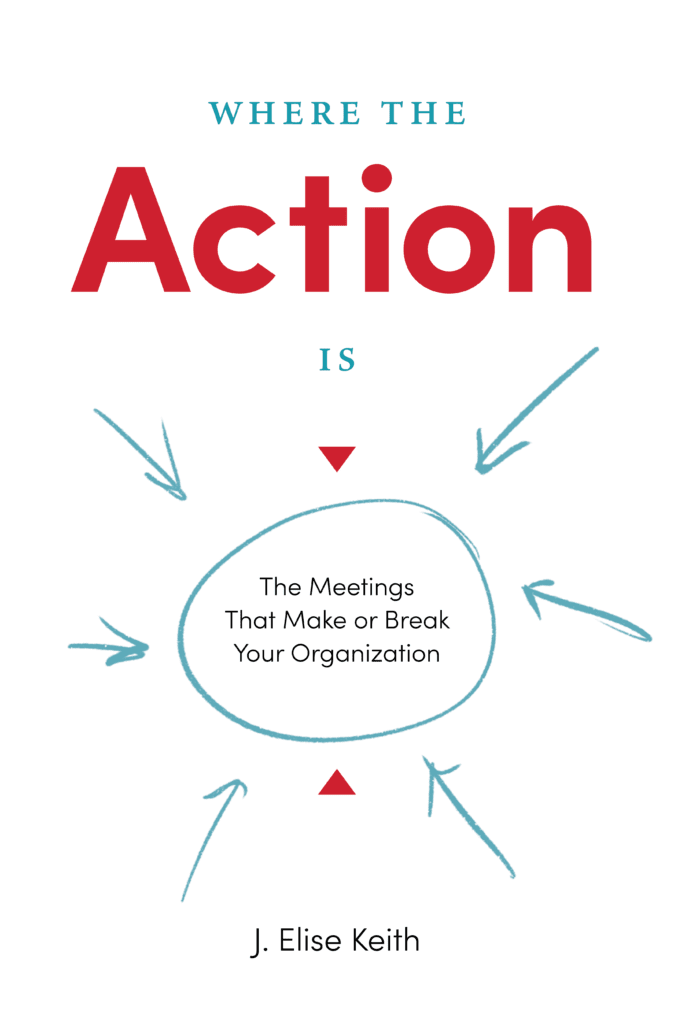Guest Post by Elise Keith, CoFounder, Lucid Meetings.
Every team meets. Most run their meetings the same way their grandparents and their grandparents’ grandparents did. Meeting records predating the Romans describe a leader pontificating, brief back-and-forth discussion, then concluding with an inconclusive bit of mumbled agreement. Meetings haven’t changed much in thousands of years.
Then, the invention of the phone liberated meetings from the confines of the conference room. PowerPoint and projectors liberated us from stacks of printed reports.
What do modern leaders do with this progress? Exactly what their ancestors did, only now their speeches come garbled through conference room phones.
It’s time to bring how we meet into the modern era.
Alongside the rise of technology, the past century has seen amazing advances in our understanding of how we can best work together in groups. We now know-how groups can collaborate, innovate, motivate, and make decisions together effectively. (Tip: listening to someone read the bullet points isn’t it.)
These four types of augmented meeting technology build on those revelations and make it possible for your team to run more successful meetings.
1. Video Conferencing
Video conferencing beats audio conferencing every time. Most corporate teams have access to video conferencing and recording technology, but few put it to use.
We’ve become far too comfortable hiding out on mute, where we’re out of sight, out of earshot, and free to put our attention elsewhere. In fact, research shows that people often prefer dial-in meetings precisely because it means they no longer have to pretend they’re paying attention. We’ve taken the subpar performance of our ancestors meetings and made it worse.
For better remote meetings, get a good video conferencing set up and use it.

Elsie Keith
Bonus Tip: turn on video conference recording for important in-person meetings too.
Did you finally find a time when all the top execs could meet about your big project? Set up your video conferencing software to record that meeting. Then get the audio transcribed to text. You aren’t going to get all those people together again easily, and this way, you’ll get as much detail as you possibly can out of the time you have. You’ll be better able to focus on the discussion and won’t have to work so hard to take detailed notes.
For example, we pair Zoom’s videoconferencing software with a Meeting Owl camera to make sure we get a good 360° video of the current speaker.
That’s not to say that notes aren’t valuable. In fact, good note-taking is critical, which is why teams need:
2. Meeting Management Software
Meeting management software makes it easy for teams to collaborate on meeting agendas and capture meeting notes. Teams that collaborate on documenting their decisions and next steps together during the meeting are more engaged, more efficient, and more committed to those results.
More importantly, meeting management systems show everyone the best way for teams in your organization to run their meetings.
Historically, everyone learned how to run meetings by attending meetings then copying what they’d seen others do. So, while research has uncovered hundreds of brilliant techniques for bringing groups together, most people never see these techniques in practice. They have no idea what’s possible.
A meeting management system makes meeting instruction available to everyone. No one has to guess what should be on the agenda, how long the meeting should be, how to lead each part of the discussion, or what needs to get written down. The system spells all that out, making it possible for the organization to bring in a great meeting process then quickly spread that to every team member.
Teeming, BoardVantage and Lucid Meetings are all examples of technologies in this category.
3. Visual Collaboration and Decision Support

Where the Action Is
Many of the most effective, engaging, and productive meeting techniques take advantage of our natural ability to process information visually. Teams can see patterns more easily when they can move data around, draw connections, and include pictures.
The teams that developed these techniques used lots of sticky notes. After the meeting, they spent time typing up all those scribbles and cleaning the room—which meant most teams saved these powerful collaboration techniques for special occasions.
Visual collaboration and decision support software make the sticky notes digital. Teams collaborate in real-time from anywhere, and no one has to type up anything later. The best tools also provide benefits you can’t easily get using paper. For example, when collecting feedback in a decision support tool, you can make every contribution anonymous to increase the chances of getting honest, useful feedback.
Example technologies include MURAL, Stormz, GroupMap, and iObeya.
4. Meeting Feedback and Performance Tracking
We estimate that there are over 55 million meetings every day in the U.S. alone. On average, executives spend 72% of their time each week in meetings.
Very few organizations track the performance of this time. Can you think of any other business process that consumes this many resources but isn’t tracked or measured in some way?
Meeting feedback and performance tracking technology gives organizations insight into this massive investment. Some technologies automatically calculate meeting costs based on calendar data, creating the hard numbers leaders need when making decisions about how to meet. Other technologies use AI to analyze meeting feedback and then, based on the emotions of participants and historical patterns, predict whether a project will succeed or if a sale is likely to close.
Technologies in this category include MeetingQuality, Gong.io, and Inspirometer.
Better meetings are possible. Great meetings require changing the way we organize and run those meetings, which in the past meant you needed lots of facilitation training and blank wall space.
Not anymore. With these four technologies, great meetings are possible for everyone working from anywhere.
***
Elise Keith is the co-founder of Lucid Meetings and the author of Where the Action Is: The Meetings That Make or Break Your Organization. For more information, please visit, www.jelisekeith.com or www.lucidmeetings.com and connect with Elise on Twitter @EliseID8.





